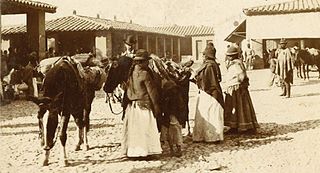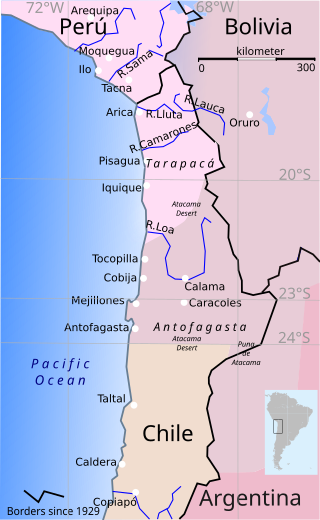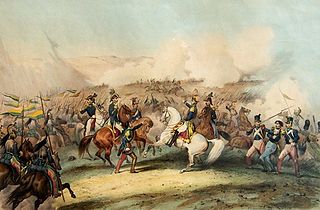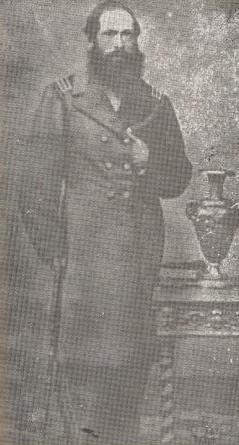
Bolivia, officially the Plurinational State of Bolivia, is a landlocked country located in western-central South America. It is bordered by Brazil to the north and east, Paraguay to the southeast, Argentina to the south, Chile to the southwest, and Peru to the west. The seat of government and administrative capital is La Paz, which contains the executive, legislative, and electoral branches of government, while the constitutional capital is Sucre, the seat of the judiciary. The largest city and principal industrial center is Santa Cruz de la Sierra, located on the Llanos Orientales, a mostly flat region in the east of the country.

The Aymara or Aimara, people are an indigenous people in the Andes and Altiplano regions of South America. About 2.3 million live in northwest Argentina, Bolivia, Chile, and Peru. Their ancestors lived in the region for many centuries before becoming a subject people of the Inca Empire in the late 15th or early 16th century, and later during the Spanish conquest of Peru in the 16th century. With the Spanish American wars of independence (1810–1825), the Aymaras became subjects of the new nations of Bolivia and Peru. After the War of the Pacific (1879–1883), Chile annexed territory with the Aymara population.

The War of the Pacific, also known as the Nitrate War and by multiple other names, was a war between Chile and a Bolivian–Peruvian alliance from 1879 to 1884. Fought over Chilean claims on coastal Bolivian territory in the Atacama Desert, the war ended with victory for Chile, which gained a significant amount of resource-rich territory from Peru and Bolivia.

The Viceroyalty of Peru, officially known as the Kingdom of Peru, was a Spanish imperial provincial administrative district, created in 1542, that originally contained modern-day Peru and most of the Spanish Empire in South America, governed from the capital of Lima. Along with the Viceroyalty of New Spain, Peru was one of two Spanish viceroyalties in the Americas from the sixteenth to the eighteenth centuries.
Club Deportivo Oriente Petrolero is a Bolivian football club based in Santa Cruz de la Sierra, Bolivia. They play at the 38,000-capacity Estadio Tahuichi Aguilera. Oriente have been Bolivian champions five times, Copa Aerosur winners two times. They have also been successful in South America, by being the second Bolivian team to make the quarter-finals in Copa Libertadores.

Tapacarí, Thapa Qhari is a town and the capital of Tapacarí Province in Cochabamba Department, Bolivia. It is located at an elevation of 2,997 m. At the time of census 2001 it had a population of 411. Most of the population lives either in adjacent rural areas or in the city of Cochabamba and they only occupy local dwellings during carnival or other festivals, or on business trips.

The Battle of Ingavi occurred on November 18, 1841, during the Peruvian-Bolivian War of 1841-1842, in the town of Ingavi, Bolivia. The Bolivian Army, commanded by Jose Ballivian, there met an invading Peruvian Army commanded by Agustín Gamarra, who later died during the battle.

Orurillo District is one of nine districts of the province Melgar in Peru.

Guaqui is a railhead and port in Bolivia on Lake Titicaca. A ferry connects with the Peruvian railhead and port on Puno. It served as location of Inca ruins prior to the arrival of the Spanish. The towns current church sites on what was the ancient ruins.
The Battle of Yavi took place on 15 November 1816, and was one of the military battles to obtain Argentina's independence from Spain, but ended in defeat.

Sica Sica is a small town and capital of Aroma Province in the La Paz Department of western Bolivia. It is located some 115 kilometres from La Paz, on the southwestern edge of the Serrania de Sicasica, a ridge, which is between La Paz and Cochabamba in a south-easterly direction. As of 2008 it has an estimated population of 4,620. The town is situated at a height of 3,933 metres on the Bolivian Altiplano. Nearby Sica Sica is Ayo Ayo, the birthplace of the indigenous rebel leader Julián Apaza.

The Naval campaign of the War of the Pacific or Saltpeter war, was a naval campaign that took place from 1879 to 1884, involving Peru, and Chile, undertaken in order to support land forces in the Atacama Desert. Although the conflict lasted until 1884, the primary naval engagements occurred between 1879 and 1880. Due to the rough terrain and few transport methods it was imperative to have control of the ports in order to have a good supply source in the region. It resulted in a successful campaign by Chile, and the success of their land campaigns eventually led to a Chilean victory, which cut off Bolivia's access to the coast.
Catacora is a location in the La Paz Department in Bolivia. It is the location of the Catacora Municipality, the second municipal section of the José Manuel Pando Province.

Colcapirhua is a town in the Cochabamba Department in central Bolivia. It is the seat of the Colcapirhua Municipality, the fifth municipal section of the Quillacollo Province.

Bolivia–Peru relations are the current and historical bilateral relations between Bolivia and Peru. Both nations are members of the Community of Latin American and Caribbean States, Group of 77, Organization of American States, Organization of Ibero-American States and the United Nations.

Claudia Arce Lemaitre is a Bolivian actress, singer, model and beauty pageant titleholder who was crowned Miss Bolivia 2009, representing the Department of Chuquisaca. In the development of the contest she won titles as Yanbal Face Best Smile and Best National Costume. Claudia stood for Bolivia in the Queen of the World 2009 contest held at Berlin, Germany, and also in Miss Universe 2010, without success. She was the first woman born in Bolivia's Department of Chuquisaca who participated in Miss Universe.

Hatun Mayu which upstream is called Qinamari(Quenamari) and downstream successively is named Nuñoa and Río Grande is a river in Peru. It is a right tributary of the Crucero River whose waters flow to Lake Titicaca. It is located in the Puno Region, Azángaro Province, Asillo District, and in the Melgar Province, in the districts Nuñoa and Orurillo.

The Peruvian-Bolivian War was a warlike confrontation between Peru and Bolivia in the years 1841 and 1842.

Gregorio Albarracín Lanchipa was a Peruvian Colonel and War Hero who participated in the Peruvian-Bolivian War of 1841-1842, the Peruvian Civil War of 1843–1844, the Peruvian Civil War of 1856–1858 and the War of the Pacific. He is known as El Centauro de las Vilcas as he was notable for using a vilca, a typical tree from Tacna, as a pole to raise the Peruvian flag during the Chilean administration of the area.

The Bolivian–Peruvian territorial dispute was a territorial dispute between Bolivia and Peru that lasted from the former's independence in 1825 to the signing of the Polo–Bustamante Treaty in 1909.
















